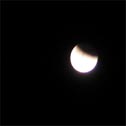|
1.00 Unit
Wt: 1.05 PD/WK 07
Regents Exam
Required
Offered in
Grades 9,10, 11, 12
Prerequisite: Math A and/or Concurrent
enrollment in Math A
Course Description:
Earth Science
is an academic course that explores the work
of nature on the earth. This course
utilizes mathematical concepts to illustrate
physical phenomena. The areas studied
include: geology, plate tectonics, earth's
geological history, limnology, oceanography,
meteorology, and astronomy. Short-term
student projects are an integral aspect of
the course. Laboratory work is required,
and students must meet the state standard
for laboratory work* in order to take the
regents examination.
* 30 written
laboratory hours
NYS
Earth Science Syllabus
| |
Earth Science
Trivia |
|
 |
Without
using precision instruments,
Eratosthenes measured the radius of
Earth in the third century B.C., and
came within 1 percent of the value
determined by today's technology.
Geyser
is derived from an Icelandic word
for "hot springs."
|
|
Lunar
eclipse 11/8/03 (Thank you, John
Costa) |
The
Arctic Ocean is is the smallest and
shallowest ocean.
According to National Geographic,
Mt. Everest grows about 4
millimeters a year: the two tectonic
plates of Asia and India, which collided millions of
years ago to form the Himalayas,
continue to press against each
other, causing the Himalyan peaks to grow slightly
each year.
The
highly rarefied region above the
chromosphere, called the corona, extends millions of
kilometers into space but is visible only during a total solar
eclipse (left). Temperatures in the corona are over
1,000,000 K.
The
surface of the Sun, called the
photosphere, is at a temperature of about 5800 K.
Sunspots are "cool" regions, only 3800 K (they look dark only by
comparison with the surrounding regions).
Talk
about old...
The Sun is about 4.5 billion years
old. Since its birth it has used up about half of the hydrogen in its core. It will continue to radiate
"peacefully" for another 5
billion years or so (although its
luminosity will approximately double in that time). But
eventually it will run out of hydrogen fuel. It will then
be forced into radical
changes which, though commonplace by
stellar standards, will result
in the total destruction of the
Earth.
(Courtesy of Nine Planets)
|
|
|
home |
|